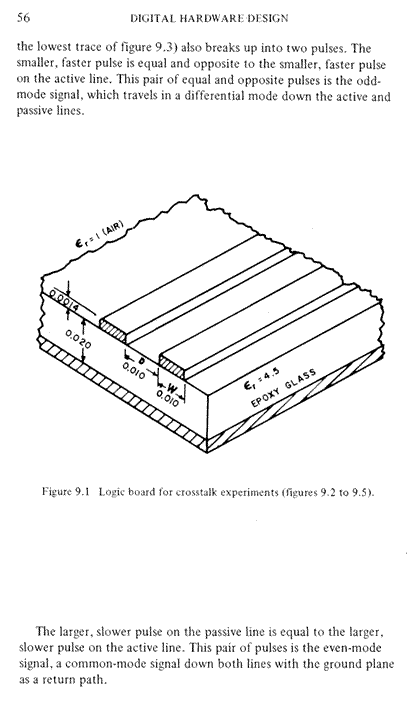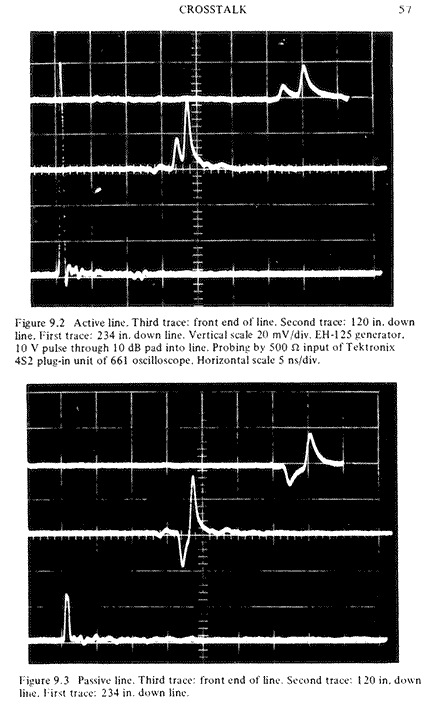There are many ways to skin classical electromagnetism!
There are the First, Second and Third Catt Question, the Wakefield experiments, Ned Smith, The Heaviside Challenge of Malcom Davison.
In Motorola, Phoenix,Arizona in 1964 I investigated the problem of interconnecting high speed (1 nsec) logic gates. This high speed digital research began advances in electromagnetic theory, previously the province of sinusoidal radio and radar.
I decided that one key problem was to determine the amount of crosstalk between two parallel lines, either surface or buried.

First, when I sent a voltage step down th eleft hand line, there resulted a flat topped pulse getting onto the other line, which disproved the idea that dv/dt or di/dt created the noise. The length of the pulse was twice the delay down the right hand, passive line. However, with surface lines, there was a further puzzle; a big spike at the end of the samll, flat topped noise pulse.
The deputy head of R&D, Walt Seelbach, encouraged me to pursue this conundrum.
I resorted to sending a very narrow, 10 cm pulse, or spike, perhaps 200 picoseconds (200 x 10-12 seconds) wide, down the left hand line – the bottom trace in the photograph below (figure 9.2). It immediately caused a similar small spike on the passive, right hand line (bottom trace, figure 9.3).
As they moved along down the wires, they separated out into two signals, first the Odd Mode, followed by the Even Mode. the first, faster, odd mode had equal and opposite signals on the two wires, followed by the slower, even mode, which had equal signals on the two wires.
I was engrossed in my discovery of two velocities in the case of parallel surface conductors, the second part of this paper. Its publication was delayed for three years. I failed to notice the much more important implications of the first part, which I only realised and published 43 years later. In Figures 9.2 and 9.3 on page 57 of my book “Digital Hardware Design” and in my paper “Crosstalk (Noise) in Digital Systems, we see a third mode, neither Even Mode nor Odd Mode. The superposition of Even Mode and Odd Mode, where electric current flows in both directions along the passive line, is illegal under classical electromagnetic theory. This directs us to Theory D. http://www.ivorcatt.co.uk/d.htm

Ned Smith
http://www.ivorcatt.co.uk/ned.pdf
For further reading see also:
http://www.ivorcatt.co.uk/x111.htm,
http://www.ivorcatt.com/2608.htm.
IEEE TRANSACTIONS ON ELECTRONIC COMPUTERS, DECEMBER 1967
http://www.ivorcatt.co.uk/x147.pdf
DIGITAL HARDWARE DESIGN, Ivor Catt, David Walten, Maldolm Davison
http://www.ivorcatt.org/digihwdesignp57.htm